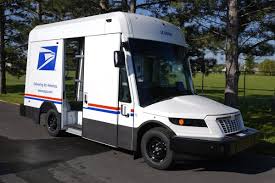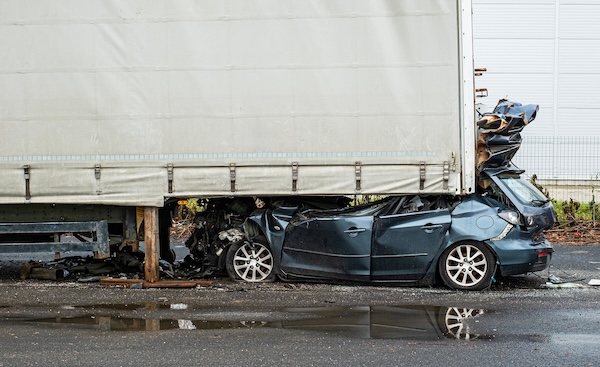USPS Dashcams: MAYBE
USPS dashcams are not universally mandated, and there is no clear evidence that every USPS vehicle is equipped with one. However, dashcams are becoming common in fleets worldwide due to their safety, accountability, and efficiency benefits.
If you’re involved in an accident with a USPS vehicle, understanding whether a dashcam might be present and how to access the footage can be critical for your case.
Are USPS Dashcams Required?
Currently, no federal or state laws require the USPS or other government agencies to install dashcams in their vehicles. The decision to equip vehicles with dashcams may vary depending on the type of vehicle, the USPS’s operational needs, or pilot programs being tested in certain regions.
While the USPS has adopted technology for efficiency—such as GPS tracking and route optimization—there’s no confirmation that dashcams are installed across the fleet.
Why Some USPS Vehicles May Have Dashcams
- Safety Initiatives: USPS Dashcams could be part of broader safety measures to reduce accidents and protect USPS drivers.
- High-Risk Areas: Certain regions or routes might see USPS dashcams as essential for monitoring high-traffic zones or improving safety in hazardous conditions.
- Modernization of Fleet: As USPS modernizes its fleet with electric and advanced vehicles, it may incorporate dashcams into newer models.
Benefits of Dashcams in USPS Vehicles
Even if not mandatory, USPS dashcams can provide significant value in postal operations, including:
1. Documenting Accidents
Dashcam footage provides an unbiased account of accidents, helping clarify liability and settle disputes. This is crucial in accidents involving USPS vehicles, which often operate in densely populated or high-traffic areas.
2. Promoting Safer Driving
Drivers aware of being monitored are more likely to adhere to traffic laws and USPS policies, reducing risky behaviors like speeding or distracted driving.
3. Preventing Fraud
USPS Dashcams can discourage staged accidents or false claims, which are costly for any fleet-based organization.
4. Optimizing Operations
Fleet managers can use dashcam footage to analyze delivery routes, identify traffic bottlenecks, and ensure efficient use of resources.
Steps to Take After an Accident Involving a USPS Vehicle
If you’re in a collision with a USPS vehicle, potential USPS dashcam footage could be pivotal in determining fault. Here’s what to do:
1. Request Dashcam Footage Promptly
If the USPS vehicle involved has a dashcam, the footage may overwrite within a few days due to limited storage capacity. It’s essential to act quickly by having your attorney file a formal preservation request with USPS.
2. Collect Additional Evidence
Because not all USPS vehicles are guaranteed to have dashcams, you should gather as much other evidence as possible, such as:
- Photos: Capture images of the accident scene, damage, and injuries.
- Witness Statements: Speak to anyone who saw the collision.
- Police Reports: Ensure accurate documentation of the incident.
- Traffic Camera Footage: Check for nearby surveillance cameras that might have recorded the accident.
3. Engage an Attorney
USPS is a federal entity, and claims involving government vehicles are subject to special rules under the Federal Tort Claims Act (FTCA). An experienced attorney can:
- Investigate whether the USPS vehicle had a dashcam.
- File the necessary paperwork to request footage.
- Help you navigate the complex legal process for compensation.
Legal Considerations for USPS Dashcam Footage
Varied Policies Across USPS Regions
The USPS operates one of the largest vehicle fleets in the U.S., and its policies may vary by region or vehicle type. For example, larger delivery trucks or vehicles operating in urban areas might be more likely to have dashcams compared to smaller, rural delivery vehicles.
Challenges in Accessing Dashcam Footage
Obtaining USPS dashcam footage can be difficult. Even if a camera is present, USPS is under no obligation to release recordings without a formal legal request. You may need to file a Freedom of Information Act (FOIA) request or take legal action to access the footage.
Navigating FTCA Regulations
When pursuing a claim against USPS, you must follow the Federal Tort Claims Act, which has specific requirements and deadlines. Working with an attorney familiar with FTCA cases can help avoid delays or denials.
Why Dashcam Footage Matters After USPS Accidents
Dashcam recordings can provide valuable insights into key aspects of an accident:
- Driver Behavior: Was the USPS driver following traffic laws?
- External Conditions: Did weather, road conditions, or other factors contribute to the collision?
- Third-Party Involvement: Was another party responsible or partially liable?
If dashcam footage exists, it can help clarify contested details, making it easier to determine fault and build a strong claim for compensation.
Final Thoughts
So, do USPS vehicles have dashcams? The answer is: MAYBE. While dashcams are becoming increasingly common in fleet operations, not every USPS vehicle is guaranteed to have one. Acting quickly to preserve evidence, including any potential dashcam recordings, is crucial after an accident. Partnering with a skilled attorney ensures that you take the right steps to secure fair compensation for your damages.
Accident?
At our firm, we specialize in navigating complex cases like these and ensuring our clients get the answers—and compensation—they deserve. If you’re wondering about USPS dashcams and how they might help your case, contact us today to discuss your situation. We’ll help you secure the evidence you need to move forward and fight for the justice you deserve.







